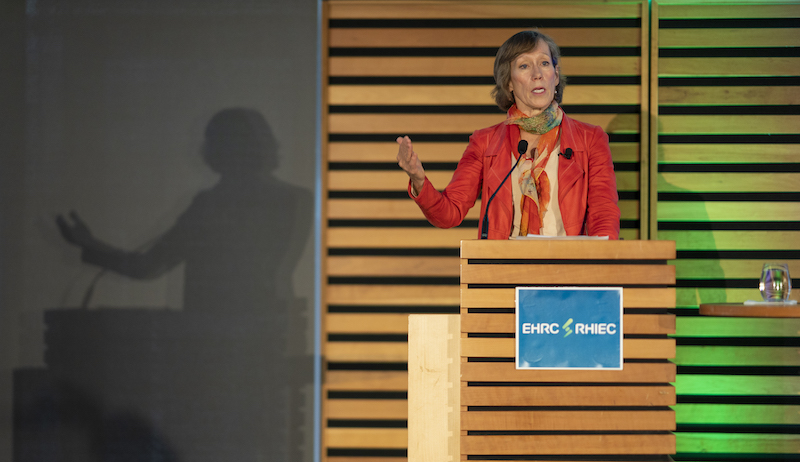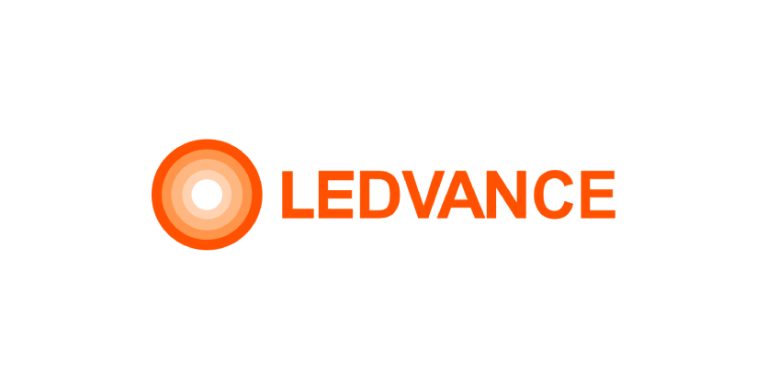Agents of Change: Karen Jensen on Unconscious Bias, Redefining Success, and Pay Equity

November 22, 2022
By Blake Marchand
The opening keynote speaker for Day Two of EHRC’s Agents of Change was Karen Jensen, Federal Pay Equity Commissioner, Canadian Human Rights Commission. Jensen spoke to developing pay equity structures, redefining what success looks like for people with disabilities and mental health issues, as well as addressing unconscious bias. She also touched on the Federal Pay Equity Act and supporting pay equity and DEI with structured action, by evaluating pay structures objectively.
Where you spend your money and how you reward employees speaks to what you value as a company. As part of the federal pay equity act, federally regulated employers have three years to do a pay equity analysis and correction, which needs to be implemented by June 2024. However, not all employers are federally regulated, Jensen spoke to the importance of implementing these types of structures provincially, as well.
Jobs need to be evaluated based on skill, effort, responsibility, and working conditions required of the position, and compensated equally based on those evaluations.
“Regardless of if you think you have a pay equity problem,” Jensen said, employers are required to complete a full analysis.
“DEI is going to cost some money, it is going to mean we’re going to need to do things differently,” Jensen said, adding that it also means we will need to define success differently. If we are going to address DEI and pay equity seriously, we need to shift the paradigm/status quo and redefine our structures. Accommodating people who do not fit the 9am-5pm model, for example. As a society, we have been fairly locked into that model. However, when it comes to mental health and people with disabilities, those structures may be counterintuitive. Despite our dependence on that type of work schedule, it doesn’t mean embracing different models won’t lead to productivity and success for certain people.
And, as Jensen mentioned, there is responsibility on employers to accept some of the extra costs that fully committing to a diverse, inclusive, and equitable workplace comes with.
During the question period of her keynote, an audience member posed a question about the ‘9-5 mold’.
“If we’re serious about diversity and inclusion, from the top down, we need to be saying that we’re going to change the status quo,” Jensen responded. “And that is what the supreme court has told us on a number of decisions that they’ve issued this topic of inclusion and people with disabilities.”
Jensen elaborated on her point about the supreme court: “So, if someone can only work part-time, and yet the management team says that means they are only bringing in half the revenue, ‘but we’re paying the full amount, so we’re not getting our return.’ Then essentially what the supreme court says, unless it’s going to create undue hardship for your organization – which essentially means you’re going to go bankrupt – you need to absorb that cost.”
“It is incredible how many organizations struggle with that concept that diversity and inclusion is going to cost more money, and it is going to mean we’re going to have to do things differently, and it is going to mean that we’re going to have to define success differently.”
People who aren’t successful in a ‘9-5 model’ can still be productive and valuable employees working within different structures tailored to their needs as an employee.
Jensen recognized that it is difficult to affect that type of cultural change, “but it is so necessary if we’re going to be really serious about inclusion of people with different backgrounds.”
Jensen mentioned the underemployment of people with disabilities as an example, “The underemployment or unemployment of folks with disabilities who are perfectly capable of contributing to the workplace, is dire. They are perfectly able to contribute, but as you (the audience member who asked the question about the ‘9-5 model’) say, it may be on different terms. It may be part time, it may be from home, it may be in very different ways that are traditionally accepted.”
Jensen said that it’s important to provide an environment where people with various forms of disabilities can be productive. Which includes acknowledgment of their pain/struggle and assistance with those struggles, but it can also mean providing mentorship. “Challenging and mentoring and encouraging someone with a disability to move forward and to be less intimidated.”
You can also build in key performance indicators into your performance measurement, you can provide bonuses to people who are spending more time mentoring people and less time being traditionally productive. “The bonus says ‘we recognize that, we know that you’re spending more time promoting diversity and we want to acknowledge that,’” explained Jensen.
“One of the premises of pay equity is that money says a lot about how you value people’s work.”
Another key component to changing company culture is using intuition around listening to your team members and recognizing the subtle ways they are impacted by racism or discrimination, for example.
An example Jensen provided was an indigenous person she worked with that had a history of experiencing subtle forms of racism, which is called micro aggressions.
“When comments were made she would react quite strongly and people began to feel uncomfortable around her, and she was excluded from social events after work because people were worried they were going to offend her and make her unhappy. And that brought the mood down. When I was part of that workplace, I wasn’t in a leadership role, as much as I tried to reach out to that individual, and include them, the rest of the organization did virtually nothing to support that effort and this person ended up leaving.”
“The collective thought about that was ‘I guess that’s the way it is, touchy people can’t exist in this environment.’ But I think if we look at it, the saying ‘walk a mile in someone else’s moccasins,’ is so important in this context.”
“If we look at it from the perspective of an indigenous person who has had a history of being questioned whether she has problem with alcohol, whether she is a bit too shy and quiet to fit into this kind of work environment. A history of those types of comments builds up and really can create a different kind of person in the work environment.”
Jensen also noted that you also need to provide training to recognize these types of circumstances to better recognize what it looks like when team members are struggling in more subtle ways and understanding how it can be addressed.
Jensen provided another example of a company that brought in a forensic psychiatrist to train employees on working with a co-worker that has autism, however the trainer completely missed the mark in terms of addressing the issues that workplace was dealing with.
“What would have been much better in that situation would be to speak with the individual who was dealing with autism,” said Jensen, asking them if they would benefit from training or if they have an ally who could help understand the challenges that needed to be addressed.
“Talking about it, communicating about it, paying attention to the subtle cues in the environment is so important.”
“Pay attention to pay equity and pay equality. The message that you communicate when you look at the pay structure and you analyse it to make sure there are not differences in pay that are related to irrelevant characteristics like gender, race and otherwise – it communicates a message that you really are serious. Serious to the point where you’re willing to put your money behind this and make the adjustments that are necessary in order to make sure your pay structure has not somehow been subject to unintentional bias.”
Pay equity plays a major role in company culture because it sets the precedent structurally that equity is important to the employer. As Jensen says, often these biases are unintentional. By setting up corporate structures like pay equity, you are adding an empirical measurement that protects against unconscious biases as well as communicating very clearly what your company or organization views as important.
Federal Pay Equity Act
The federal pay equity act aimed to improve on the Ontario and Quebec models, but it implemented a timeframe. Employers have three years to complete a pay equity analysis/framework.
Jensen spoke to the need to add teeth to require implementation of pay equity policies. The federal act provides that, however it only applies to federally regulated employers. Jensen stressed the importance of provinces adopting similar models that include mandates and timeframes to do more than encourage employers to complete and implement pay equity frameworks. It is important that companies have structured models in place that base hiring, promotion, and pay raises based on merit.
The next article in this series focuses on the Agents of Change ‘Bridging the Gap Between Talk and Action’ Panel with Carol Calvert, Vice-President, People & Culture, Electrical Safety Authority; Carol Dayment, Senior Advisor, Diversity, Equity, & Inclusion, Nova Scotia Power; and Dan Quigley, Federal Adjudicator and moderated by Humberto Carolo, Executive Director of the White Ribbon Campaign.

















